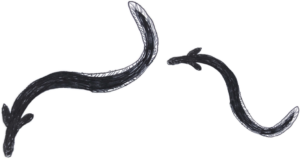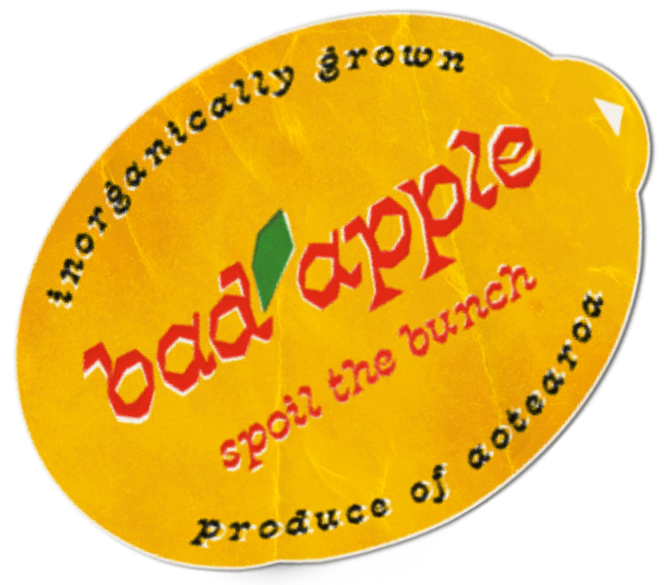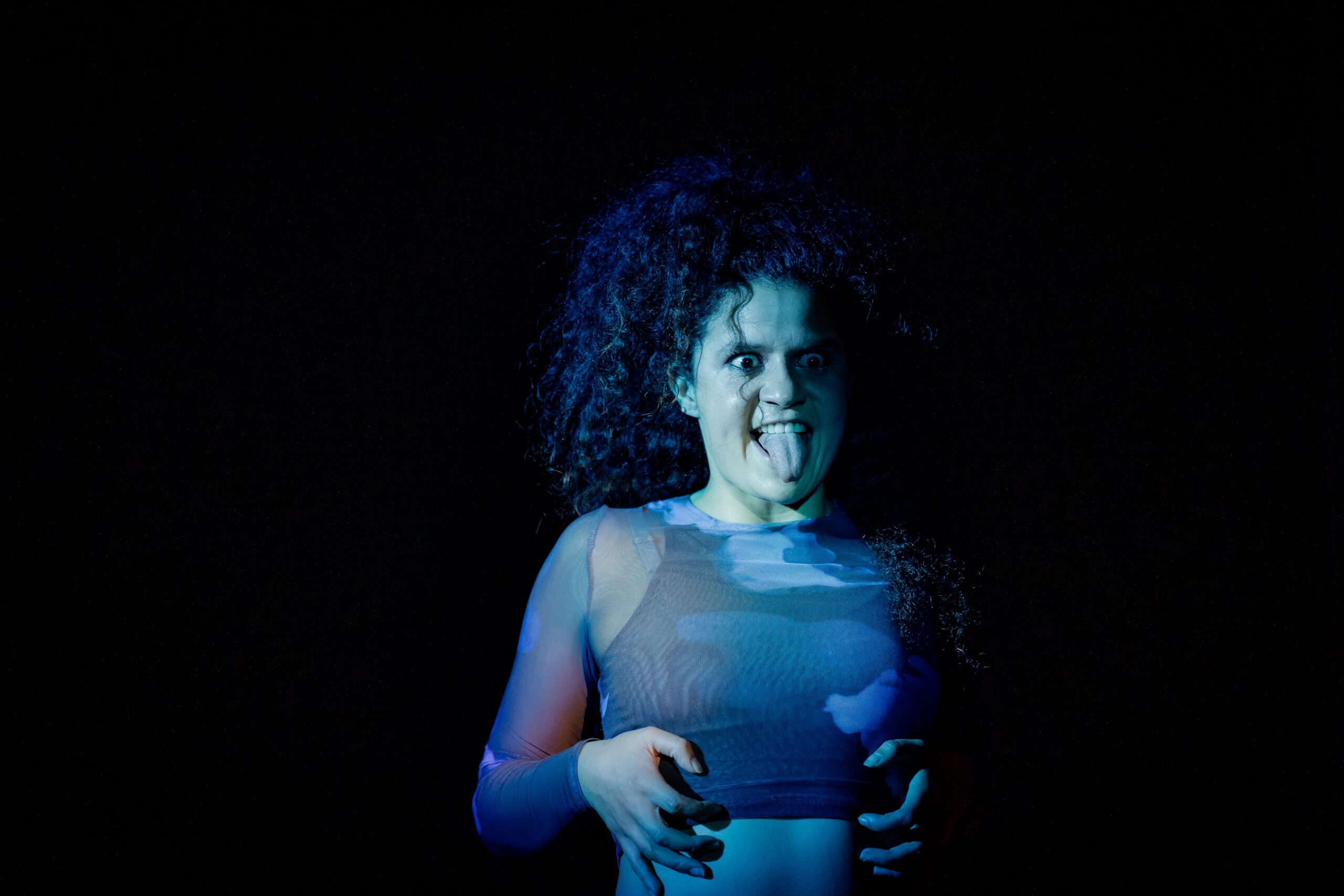
i went to SCATTERGUN: AFTER THE DEATH OF RŪAUMOKO at the Loft, Q Theatre on Huna,[1] it was mean. and a week later it still erupts from my negroni. The show beautifully honours the wairua of the audience & Ana plays cheekily with the exchange. She shows that theatre’s foundational joy is that it’s alive.
ScatterGun enters in these cool as shoes & her & Ana start to conjure a world of atua & tūpuna & let us in. The stage is dark, mirrored and fringed in neon rubble. Here, the dance between Te Kore, Te Pō and Te Ao is real, not only performed.
The show is volcanic, in both its eruptive-ness (eruptivity??) & its slow unravelling. It’s written in a stunning balance between verbatim theatre, epic poetry, whaikōrero & waiata. While following ScatterGun through a long night of outbursts, revelations & visitations, 5 years after the death of her younger brother Rūaumoko, we’re challenged with her (our) grief & her (our) longing.
I thought about wairua as a creative principle of the double.[2] The balancing of our flesh & ancestral spirits // human & non-human // living & non-living. I wondered how this might apply to the relationship between Ana and ScatterGun, between the creator & character // the story & its teller. Whose is the body & whose is its other?
When ScatterGun stands swallowed between conversations at her brother’s memorial, the worlds of her tūpuna & atua emerge to fill the stage. We’re welcomed into her thoughts. She spends much of the show woven between these double worlds. Her grief is both current and ancestral . . . her brother is both here and isn’t . . . she’s both ScatterGun and Agnes.
There’re times when Scattergun becomes audience too—watching her world glaze past, staring into a negroni. There’s the relief (and the applause) when she erupts with high-oiled articulations that we might wish to find in ourselves. At her mum’s new husband & his best mate (the Simons) she says:
“Arguably, the epicentre in the earthquake of shit that came after the total desecration of Te Tiriti Ō Waitangi is the way that very specific bloodlines have managed to cream intergenerational wealth off snatched land, which I know makes everybody’s asshole clamp tightly shut to talk about, but let’s just cut the fucking pleasantries for a moment and go there.”
Sometimes i fall into the contemporary habit of watching something to relieve me of myself, but this show wouldn’t allow it—i was lulled back into myself, opened, shared in the wairua of that night, of Huna. ScatterGun honours a people’s inner tectonics and it hurts good. There’s a mirror, that both reflects and opens—like the stage-floor that floats the characters through their worlds. Ana is the pou that grounds the floating characters:
Narrator // ScatterGun // The Eel // The Simons // Susan // Old-mate // Leroy // Kererū // Chelsea // Manu // Uncle // Tīrairaka // Aunty // Rūaumoko.
What might it mean to grieve when grief isn’t yours alone?? ScatterGun digs from her own grief a shared truth(?) rooted in our (stolen) soil. The play gushes us across worlds. When ScatterGun is reunited with the voice of her brother, Rūaumoko (named after Papaūānuku’s youngest child), he tells her he made it back home. “For you, it’s sort of . . . already behind you, and simultaneously, still yet to be deciphered and determined.” and that’s kind of where this show sits for me now . . . both happened and happening. I trust it’ll continue to reveal itself. :))
[1] (friday 19th April 2024)
[2] facilitated heaps by Hana Pera Aoake & Morgan Godfrey: Existing in Multitudes
Featured photo by Andi Crown, featured illustration by Liam Jacobson.



